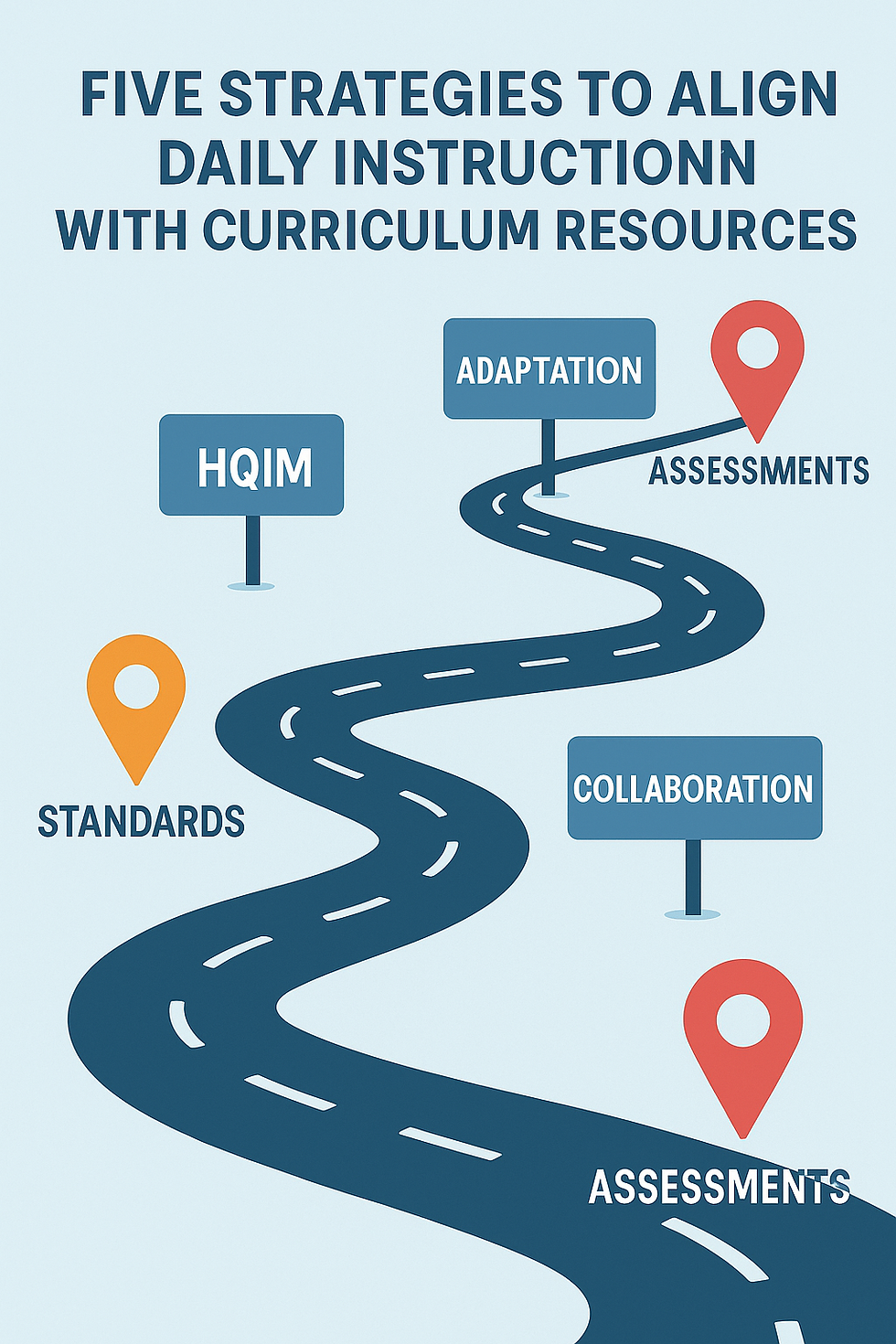Aligning Daily Instruction with Curriculum Resources: Five Strategies for Teachers
- Learning List
- Sep 11
- 3 min read
Updated: Sep 15

The start of a new school year is full of excitement, new routines, and possibilities. One of the most important steps teachers can take to set the tone for success is ensuring their daily instruction is aligned with both standards and curriculum resources. Alignment creates a roadmap for teaching and learning, providing clarity for teachers and students alike.
Below are five practical strategies to help you begin the year with confidence and ensure every lesson builds toward meaningful outcomes.
1. Start with the Standards
Standards are the backbone of alignment. Before planning daily lessons, revisit your state standards and ask: What are students expected to know and be able to do by the end of this unit? Unpack the standards to ensure that you and your team know the content, the context, and the cognitive rigor of each standard in the unit.
By using standards as the anchor, you ensure that every activity, discussion, and assignment connects to the larger learning goals. Research from the RAND Corporation underscores this, noting that teachers who ground instruction in clear standards and high-quality instructional materials report stronger outcomes for students (Kaufman, Doan, & Diliberti, Teachers’ Use of High-Quality Instructional Materials, RAND Corporation, 2020).
2. Use HQIM Curriculum Resources to Anchor Lessons
High-quality instructional materials (HQIM) are designed to provide a coherent progression of learning. Instead of starting your lesson planning from scratch, use HQIM as the foundation. Pacing guides, lesson sequences, and embedded activities help ensure that daily instruction supports grade-level expectations. Confirm that every activity aligns with the standards—or save time by using Learning List’s alignment reports.
As instructional expert Doug Lemov explains, “When curriculum, instruction, and assessment are tightly aligned, students get a coherent learning experience that builds mastery step by step” (Teach Like a Champion 2.0, Jossey-Bass, 2015).
3. Plan with Assessments in Mind
Backward planning is essential for alignment. Start with the end in mind: What should students know or be able to demonstrate on the unit or state assessment? Once you’ve identified success criteria, design lessons that intentionally build toward that outcome.
The National Institute for Excellence in Teaching emphasizes that alignment between instruction and assessment ensures that instructional time is maximized and that all students have access to grade-level content.
4. Adapt, Don’t Abandon
Alignment doesn’t mean teaching curriculum resources exactly as written. Instead, it’s about making thoughtful adaptations to meet your students’ diverse needs while maintaining the integrity of the lesson. For example, you might adjust pacing, add scaffolds for English learners, or provide enrichment for advanced students.
As Carol Ann Tomlinson, a leading voice in differentiation reminds us, “Differentiation is not the opposite of alignment—it is how we ensure aligned resources meet the diverse needs of learners” (How to Differentiate Instruction in Academically Diverse Classrooms, ASCD, 2017).
5. Collaborate with Colleagues
Alignment is strengthened when teams work together to use HQIM. When teachers plan together sharing pacing calendars, assessments, strategies, and resources, they create consistency across classrooms. This ensures that all students access the same high-quality, standards-aligned instruction.
Collaboration also reduces the burden on individual teachers. By pooling ideas and resources, teachers can focus more energy on engaging students and personalizing instruction.
Bringing It All Together
Alignment is about clarity and coherence. By starting with standards, grounding instruction in HQIM, planning backward from assessments, adapting for diverse learners, and collaborating with colleagues, you can ensure your instruction remains focused and purposeful throughout the year.
Remember: alignment is not about rigidity. It is about providing a consistent, high-quality experience that helps all students thrive. When your instruction is aligned to the standards and your curriculum, both you and your students begin the year with clarity—and clarity leads to success.



